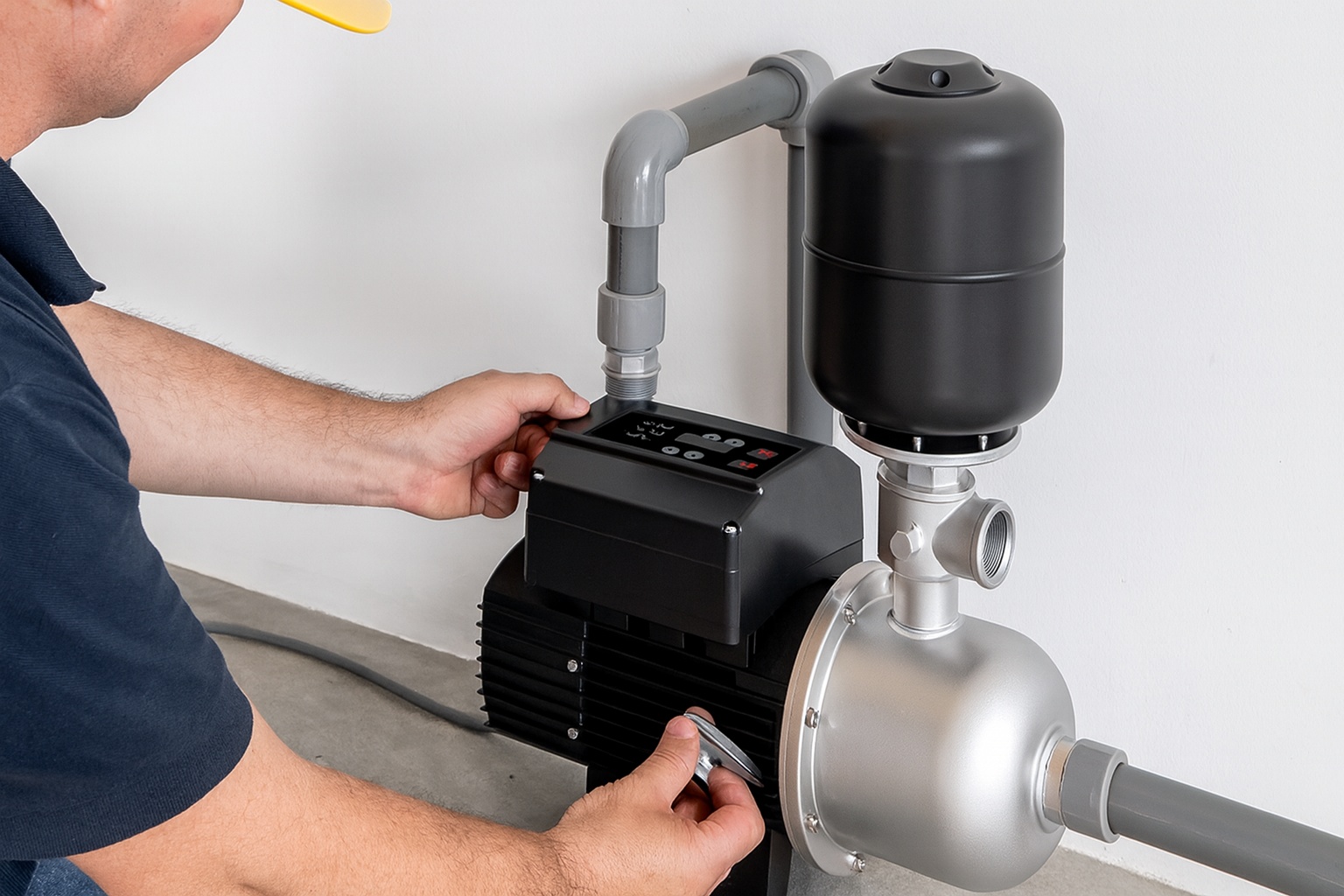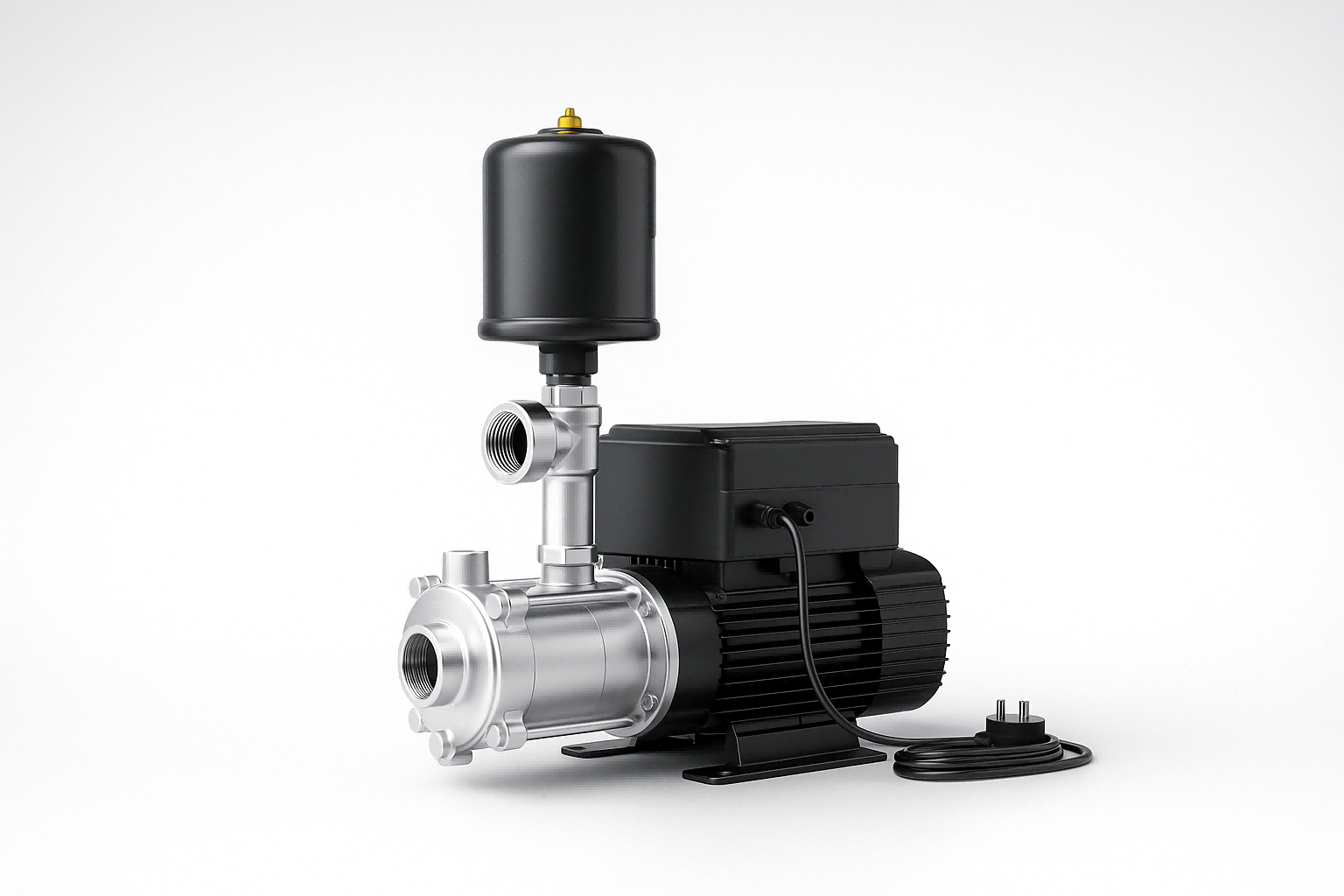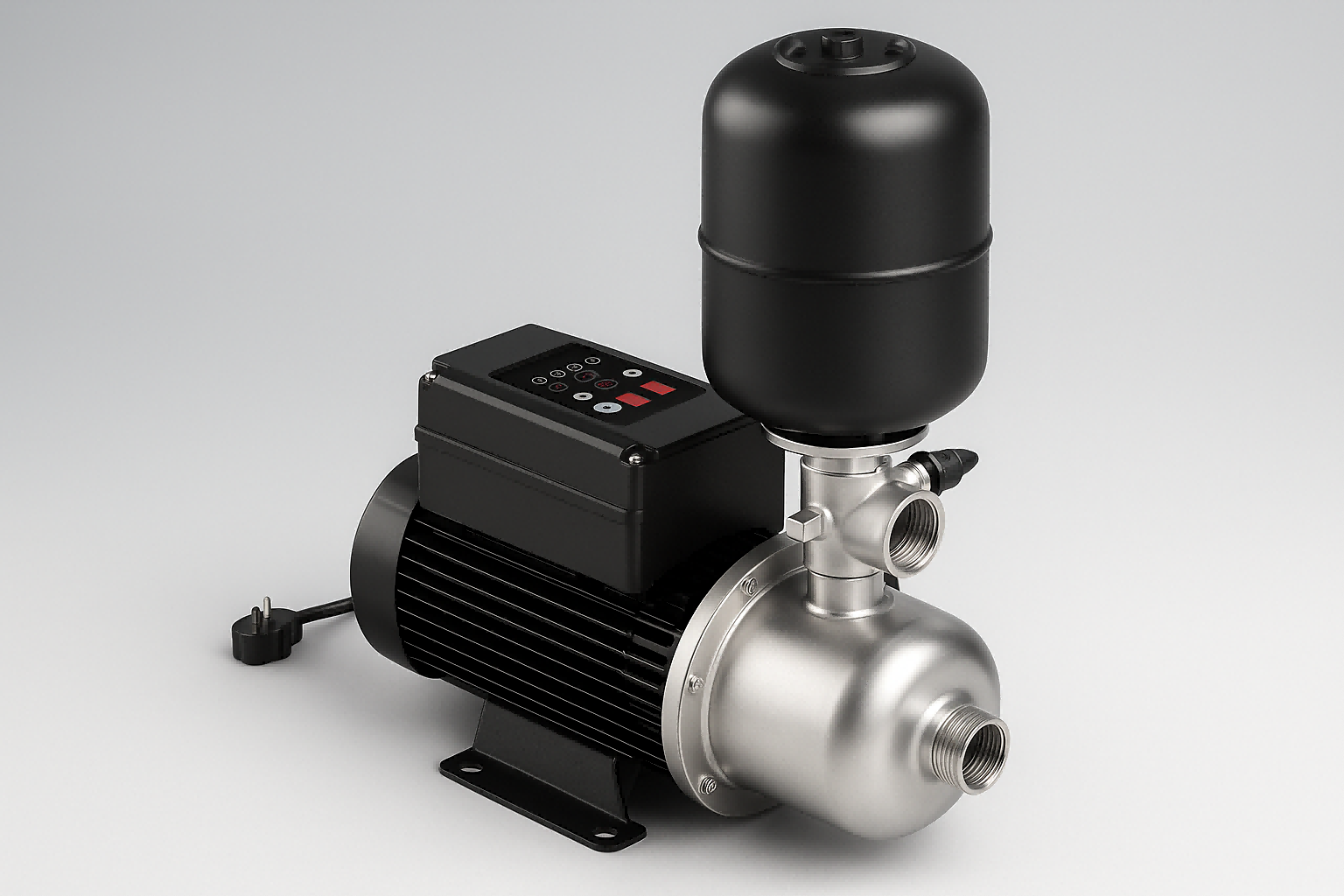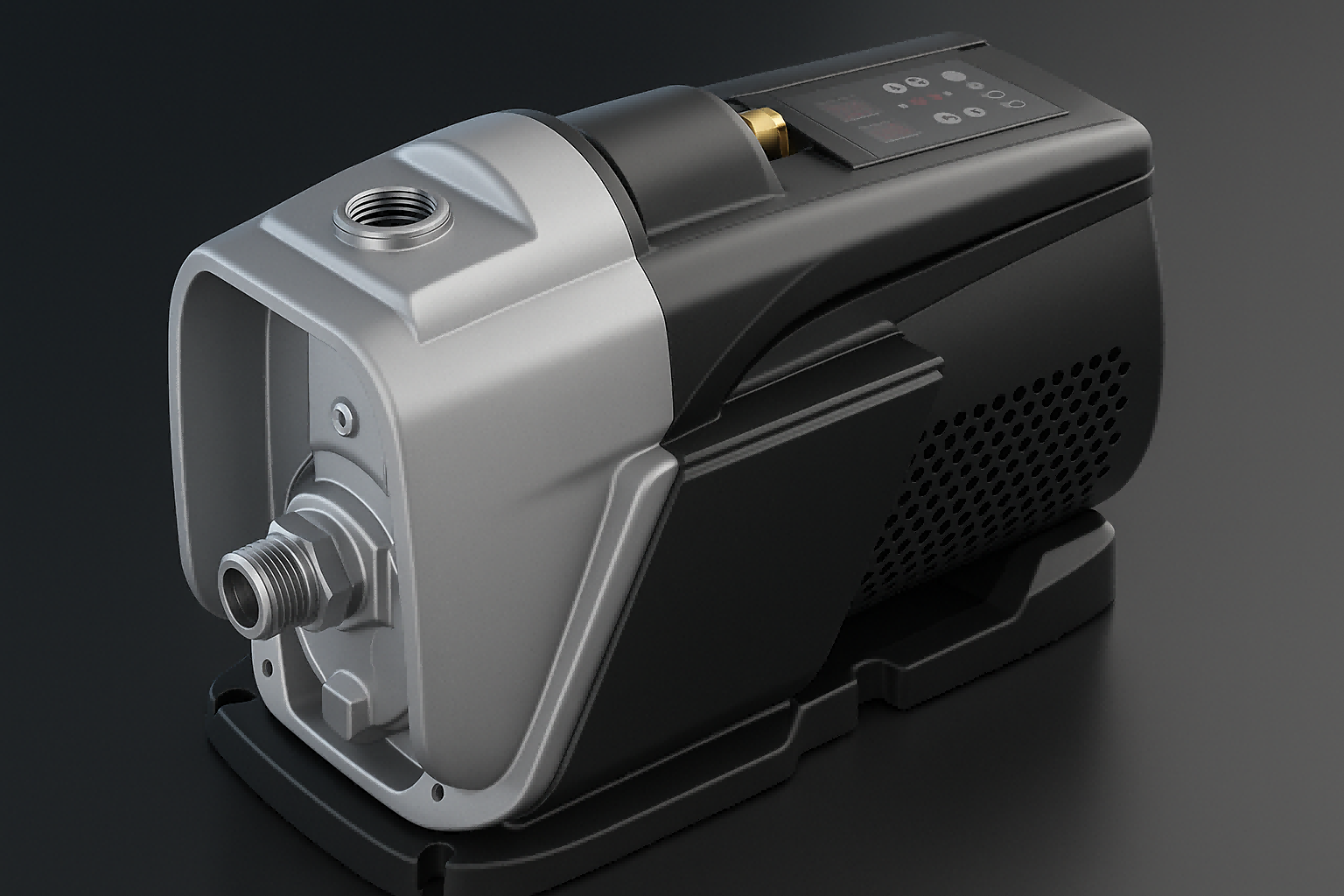How to boost domestic water pressure?
Tired of weak showers and slow-filling tubs?
Low water pressure disrupts your daily routine, turning simple tasks into frustrating chores and leaving you longing for a stronger, more reliable flow.
The most effective way to permanently boost domestic water pressure is to diagnose the root cause—such as clogged pipes, leaks, or low municipal supply.
For persistent issues, installing a modern water pressure booster pump provides a reliable, long-term solution by actively increasing and maintaining consistent pressure throughout your home.

Low water pressure can be a persistent annoyance that affects everything from your morning shower to washing the dishes.
It can make you feel like your home's plumbing is just not up to the task.
But before you can find the right solution, you need to understand what's causing the problem in the first place.
Pinpointing the source of the issue is the first critical step toward enjoying a powerful and consistent water flow again.
Let's explore the common culprits behind that frustrating trickle.
What causes low water pressure in the house?
Are you wondering why your water flow has slowed to a dribble?
This issue can stem from problems inside your home, in the main supply line, or even from your own water usage habits.
Low water pressure is commonly caused by partially closed shutoff valves, hidden leaks in your plumbing, clogged pipes due to mineral buildup, or high water demand from your local municipal supply.
Identifying which of these issues is affecting your home is the key to finding a solution.
The journey to better water pressure begins with a bit of detective work.
The problem might be simple and easy to fix, or it could be a sign of a more complex issue within your plumbing system.
Understanding the potential causes allows you to systematically check each one, narrowing down the possibilities until you find the true source of your low pressure woes.
Below, we break down the most common reasons your water pressure might be lacking, from simple obstructions to more widespread supply issues.
Issues with Your Water Supply Line
Sometimes, the problem isn't inside your house at all.
The issue could originate from the municipal water supply itself.
During peak hours, when everyone in your neighborhood is using water, the overall pressure in the mains can drop significantly.
If your home shares a supply line with neighbors, their usage can directly impact your pressure.
In older areas, the infrastructure itself might be outdated and unable to provide adequate pressure to all homes consistently.
If you suspect an external issue, a quick chat with your neighbors can often confirm if they are experiencing similar problems.
Problems Inside Your Home's Plumbing
More often than not, the culprit lies within your own property's plumbing system.
This is where you should focus most of your diagnostic efforts.
There are several common internal problems to look for:
- Partially Closed Valves: Your home has two main shutoff valves: a meter valve and a main shutoff valve. If either of these has been partially closed, perhaps after a repair, it will restrict the flow of water into your home.
- Clogged Pipes: Over time, older pipes, especially those made of galvanized steel, can corrode and accumulate mineral deposits. This buildup narrows the internal diameter of the pipes, acting like a clog that severely restricts water flow.
- Hidden Leaks: Even a small, undetected leak in your pipework means that some water is escaping before it ever reaches your taps. This loss of water volume directly translates to a drop in pressure at the faucet.
- Failing Pressure Regulator: Many homes have a pressure reducing valve (PRV) or regulator installed where the water line enters the house. These devices can fail over time, getting stuck in a partially closed position and causing a sudden or gradual loss of pressure.
High Water Demand in Your Household
The issue could also be as simple as demand outstripping supply within your own four walls.
If you live in a household where multiple water-using appliances often run simultaneously, you'll notice a drop in pressure.
Running the washing machine while someone is showering and the dishwasher is on can put a significant strain on your system.
Each open tap or appliance creates another exit point for the water, dividing the available flow and reducing the pressure at each individual fixture.
This is a common scenario in larger families or homes with many bathrooms.
| Cause of Low Pressure | Typical Location | How to Identify | Common Solution |
|---|---|---|---|
| Municipal Supply Issue | External (Water Main) | Neighbors have the same problem. | Contact water company; Install booster pump. |
| Partially Closed Valve | Internal (Near meter/main entry) | Check that valves are fully open. | Fully open the main shutoff and meter valves. |
| Clogged Pipes | Internal (Throughout plumbing) | Gradual pressure loss over years; Affects older homes. | Professional pipe cleaning or full repiping. |
| Hidden Leak | Internal (Pipes in walls/floors) | Water meter reading increases with no usage. | Hire a plumber to find and repair the leak. |
| High Household Demand | Internal (Multiple fixtures) | Pressure drops when multiple taps are on. | Stagger water usage; Install a booster pump. |
How to diagnose the cause of low water pressure?
Struggling with weak water flow but don't know where to start looking?
Without a clear diagnosis, you might spend time and money on solutions that don't address the real problem.
To diagnose low water pressure, first ask your neighbors if they have the same issue to rule out a municipal problem.
Then, check that your main shutoff valve is fully open.
Finally, perform a leak test by monitoring your water meter when all taps are off.
Before calling a professional, there are several simple diagnostic tests you can perform yourself.
These steps are easy, require no special tools, and can help you quickly narrow down the source of your low water pressure.
By following a logical process of elimination, you can determine whether the problem is widespread, isolated to your home, or even just a single fixture.
This will empower you to take the correct next steps, whether it's a simple DIY fix or a call to a qualified plumber.
The Neighbor Check
This is the simplest and quickest first step.
Go next door and ask your neighbors if their water pressure is also low.
If they are experiencing the same issue, the problem is almost certainly with the municipal water supply for your entire street or area.
This saves you the trouble of inspecting your own plumbing.
In this case, your best course of action is to contact your local water utility company to report the problem.
If your neighbors' pressure is fine, you can confidently conclude that the issue is isolated to your property.
The Shutoff Valve Inspection
Your home has a main water shutoff valve, typically located where the main water line enters your house—often in a basement, crawl space, or utility closet.
There is also a meter valve located at your water meter, usually near the street under a cover.
If any recent plumbing work has been done, it's possible one of these valves was not fully reopened.
Locate your main shutoff valve (it often has a wheel-like or lever handle) and ensure it is turned completely counter-clockwise to the fully open position.
If it’s safe and accessible, you can also check the meter valve.
Performing a Leak Test
A hidden leak is a common and serious cause of low water pressure.
Fortunately, you can use your water meter to check for one.
Follow these simple steps:
- Ensure no water is being used inside or outside your house. Turn off all taps, showers, and water-using appliances like washing machines and dishwashers.
- Locate your water meter and take a reading or note the position of the dial. Many meters have a small triangle or wheel that spins when water is flowing.
- Wait for at least two hours without using any water.
- Check the meter again. If the reading has increased or the leak indicator is in a different position, you likely have a leak somewhere in your plumbing system.
Checking for Clogs and Buildup
If the pressure is low at only one or two fixtures, like a specific sink or shower, the problem is likely localized.
The most common cause is a clogged aerator or showerhead.
Mineral deposits and small debris can easily build up in these small screens over time, restricting flow.
Unscrew the aerator from the end of the faucet or the showerhead from its arm.
Check the small screen inside for any grit or white, chalky buildup.
Clean it out thoroughly with a small brush and vinegar, then reattach it.
Turn on the tap and see if the pressure has improved.
If it has, you've found your simple fix.
If the pressure is low throughout the house and you have older pipes, you may have a more widespread clogging issue that requires professional attention.
How can I increase water pressure without a pump?
Do you want a quick fix for your water pressure without investing in new equipment?
Sometimes, low pressure is caused by simple blockages or settings that are easy to overlook and even easier to fix.
You can often increase water pressure without a pump by ensuring your main shutoff valve is fully open, regularly cleaning aerators and showerheads to remove mineral buildup, and checking that your home's pressure regulator is adjusted correctly.
These simple steps can restore lost flow.
Before you consider more significant investments, it’s worth exploring the simple, no-cost solutions that might be available.
Many pressure problems aren't caused by a fundamental lack of supply but by simple restrictions within your existing plumbing.
By performing a few basic maintenance checks and adjustments, you may be able to significantly improve your water flow.
These fixes are straightforward enough for most homeowners to handle themselves and can make a surprising difference to your daily water pressure experience.
Fully Open Your Shutoff Valves
This is the most common and easiest fix.
Your home has a main shutoff valve that controls all the water coming into your property.
If this valve is even slightly closed, it will restrict the flow and reduce pressure everywhere.
Locate the valve—it's usually in the basement, a utility room, or under the kitchen sink.
It will typically have a wheel handle or a lever handle.
Turn the handle fully counter-clockwise until it stops.
This ensures it is completely open.
Don't force it, but make sure it has been turned as far as it can go.
Clean Fixtures and Showerheads
Over time, the small openings in your faucets' aerators and showerheads can become clogged with limescale and other mineral deposits, especially in hard water areas.
This buildup acts like a bottleneck, severely restricting water flow right at the exit point.
Unscrew the aerators from your faucets and the head from your shower.
Soak them in a bowl of white vinegar for a few hours to dissolve the deposits.
Use an old toothbrush to gently scrub away any remaining residue.
Rinse them thoroughly and reinstall them.
This simple cleaning can dramatically restore pressure to individual fixtures.
Check Your Pressure Regulator
If your home has one, a pressure reducing valve (PRV) is designed to lower the high pressure from the municipal supply to a safe level for your home's plumbing.
These valves can sometimes fail or be improperly adjusted.
They are typically bell-shaped and located near your main shutoff valve.
Most have an adjustment screw on top.
You can try turning the screw clockwise in small increments to increase the downstream pressure.
However, be cautious.
Setting the pressure too high (above 80 PSI) can damage your pipes and appliances.
If adjusting the PRV doesn't help or if you're unsure, it may be time to call a plumber, as the unit might need to be replaced.
Schedule High-Demand Activities
If your pressure only drops when multiple people are using water, the problem is likely internal demand.
While not a technical "fix," you can manage this by changing your habits.
Try to avoid running the washing machine, dishwasher, and shower all at the same time.
By staggering the use of high-demand appliances, you ensure that more pressure is available for the task at hand.
This behavioral change costs nothing and can make a noticeable difference in the perceived water pressure during peak use times in your household.
How do water pressure booster pumps work?
Are you fed up with chronically low water pressure that simple fixes can't solve?
Sometimes the only way to get the strong, consistent flow you need is to actively add pressure to your system.
A water pressure booster pump works by using a motor-driven impeller to draw in water from the supply line and then push it out into your home's plumbing at a higher pressure.
This ensures a strong, consistent flow to all taps and showers, even during high-demand periods.
When the water pressure coming into your home is fundamentally too low, a booster pump is the most reliable and effective solution.
Think of it as a powerful fan for your water.
It takes the existing flow and gives it a significant "boost" before it travels through your pipes.
This technology is not just for large commercial buildings; compact and quiet models are designed specifically for domestic use.
Understanding how these devices operate will help you appreciate how they can transform your home's water system from weak and unreliable to powerful and consistent.
The Core Components
A typical booster pump system consists of several key parts working together:
- Motor: This is the engine of the pump, providing the power to drive the system.
- Impeller(s): These are spinning discs with blades inside the pump. As water enters, the impellers rotate at high speed, flinging the water outwards with great force. This centrifugal action is what increases the water pressure.
- Inlet and Outlet: The inlet connects to your incoming water supply line, and the outlet connects to the plumbing system that distributes water throughout your home.
- Pressure Sensor/Switch: This crucial component monitors the pressure in your pipes. It tells the pump when to turn on (when pressure drops, like when you open a tap) and when to turn off (when pressure is restored, after you close the tap).
Traditional vs. Modern VFD Pumps
The technology inside booster pumps has evolved significantly.
Traditional pumps operate at a fixed, maximum speed.
They turn on at full power when pressure drops and shut off completely when it's restored.
This can lead to pressure fluctuations and higher energy use.
Modern pumps, however, often use a Variable Frequency Drive (VFD).
This is a much more intelligent system.
A VFD controller constantly monitors water demand and adjusts the motor's speed in real-time.
If you only turn on one small tap, the motor spins just fast enough to maintain the target pressure.
If you turn on multiple showers, it speeds up to meet the higher demand.
This results in several key advantages:
- Constant Pressure: The water pressure remains perfectly stable, with no noticeable fluctuations, regardless of how many taps are open.
- Energy Efficiency: The motor only uses the exact amount of energy needed for the current demand, which can lead to significant electricity savings.
- Quiet Operation: Because the pump often runs at a lower speed, it is significantly quieter than a traditional pump that is always running at 100%.
- Reduced Wear: The "soft start" and "soft stop" functionality of VFDs reduces mechanical stress on the pump and pipes, extending the life of the entire system.
| Feature | Fixed-Speed Pump | Variable Frequency Drive (VFD) Pump |
|---|---|---|
| Pressure Stability | Fluctuates as pump cycles on/off. | Perfectly constant and stable. |
| Energy Consumption | High; always runs at full power. | Low; adjusts speed to match demand. |
| Noise Level | Louder; cycles on and off abruptly. | Ultra-quiet; operates smoothly at lower speeds. |
| Component Lifespan | Shorter due to high mechanical stress. | Longer due to soft starts and reduced cycling. |
| User Experience | Noticeable pressure drops and surges. | Seamless, powerful flow at all times. |
What features to look for in a modern booster pump?
Ready to invest in a booster pump but overwhelmed by the options?
Choosing the right pump means looking beyond the basic specifications to find one that is smart, durable, and safe for your home.
When choosing a modern booster pump, look for key features like a Variable Frequency Drive (VFD) for constant pressure and energy savings, durable materials like stainless steel, a comprehensive set of built-in electronic protections, and a user-friendly interface for easy monitoring and adjustment.
Not all booster pumps are created equal.
The latest generation of pumps incorporates advanced technology designed to deliver superior performance, exceptional reliability, and a long service life.
Knowing what features to look for will help you select a product that is not just a temporary fix, but a long-term upgrade to your home's water system.
From the intelligence of its controls to the quality of its construction, these are the details that separate a basic pump from a high-performance, premium solution.
Performance and Efficiency
The heart of a modern pump is its drive technology.
A pump that combines a high-efficiency motor with a Variable Frequency Drive (VFD) is the gold standard.
This pairing ensures two critical outcomes:
- Perfectly Constant Pressure: The VFD adjusts the motor speed in real-time, eliminating the annoying pressure fluctuations common with older pumps.
- Energy Savings: By running only as fast as needed, the pump consumes significantly less electricity compared to a fixed-speed model.
Also, look for pumps with ultra-quiet operation, often rated below 50dB, which is quieter than a normal conversation.
This makes them suitable for installation even within living spaces without causing a disturbance.
Durability and Materials
A pump is a long-term investment, and its lifespan is determined by the quality of its components.
High-quality pumps use premium materials designed to withstand constant use and resist corrosion.
Key material features to look for include:
- Stainless Steel Impellers: Unlike plastic impellers that can wear down over time, stainless steel impellers maintain their shape and efficiency, ensuring consistent performance for years.
- Weather-Resistant Housing: The pump's outer casing should be made from durable, UV-resistant materials to protect it from the elements if installed outdoors.
- Waterproof Electronics: The most critical feature for electronic reliability is a fully sealed controller board. Look for pumps with an IP67 rating for their electronics, meaning the circuit board is completely potted in resin, making it impervious to moisture, dust, and condensation, which are common causes of failure.
Intelligent Protection Systems
A smart pump protects itself.
Modern booster pumps come with a sophisticated suite of built-in protections that monitor the system and automatically shut it down to prevent damage.
This is far more advanced than a simple thermal switch.
A comprehensive protection system should guard against a wide range of potential faults, including:
- Dry-Run Protection: Prevents the pump from burning out if the water supply is interrupted.
- Overheating Protection: Monitors both the motor and the electronics to prevent damage from excessive heat.
- Voltage Protection: Protects the unit from power surges or brownouts in the electrical grid.
- Frost Protection: Automatically runs the pump for short periods in freezing conditions to prevent ice from forming and cracking the pump housing.
- Leak Detection: Can intelligently monitor for small, consistent pressure drops that indicate a potential leak in your plumbing system.
User-Friendly Controls and Monitoring
Despite the complex technology inside, operating the pump should be simple.
Look for a model with an intuitive control panel and a clear digital display.
A good user interface allows you to easily:
- Turn the pump on and off.
- Adjust the desired water pressure with simple up/down buttons.
- View real-time operational data, such as current power consumption, motor speed, and water temperature.
Clear LED indicator lights should provide at-a-glance status updates, instantly telling you if the pump is running normally, if it has detected a fault like a water shortage, or if there is an issue with the power supply.
When should I call a plumber about low water pressure?
Have you tried all the simple fixes but are still facing a weak flow?
Some plumbing problems are too complex or risky for a DIY approach and require the tools and expertise of a professional.
You should call a plumber for low water pressure if you suspect a hidden leak, if your pipes are severely clogged, if a main valve is broken, or if you need to install a water pressure booster pump.
These tasks require specialized skills to avoid causing further damage.
While it's empowering to diagnose and fix minor issues yourself, it's equally important to recognize when a problem is beyond your scope.
Attempting a complex plumbing repair without the proper training can lead to costly mistakes, water damage, and even safety hazards.
A qualified professional can accurately diagnose the problem, perform the repair safely and efficiently, and ensure the work complies with local building codes.
Here are the specific situations where making that call is the smartest decision.
Suspected Leaks You Can't Find
If your water meter test indicates a leak but you see no visible signs of water, the leak is likely behind a wall, under a floor, or in the main service line underground.
Finding and accessing these leaks requires specialized equipment, such as acoustic detectors and thermal imaging cameras.
A plumber has the tools and experience to pinpoint the exact location of the leak with minimal damage to your property.
Attempting to find it yourself by opening up walls or floors can be a destructive and ultimately fruitless process.
Deeply Clogged Pipes
If your home has old galvanized pipes and the low pressure is a house-wide, long-term problem, you're likely dealing with extensive internal corrosion and mineral buildup.
This is not a blockage that can be cleared with a simple drain snake or chemicals.
A plumber can use hydro-jetting equipment to scour the inside of the pipes or, in severe cases, advise you on the most effective sections to replace.
This process, known as repiping, is a major job that is strictly the domain of professionals.
Broken Valves
The main shutoff valve is a critical component of your plumbing system.
If the handle spins freely without stopping the water, or if it is frozen in place and won't turn, the valve is broken.
Replacing a main valve is a complex task that involves shutting off the water at the street (which may require the water company's help) and requires precision soldering or compression fitting skills.
A mistake during this repair can lead to a major, uncontrollable flood in your home.
Installing a Water Pressure Booster Pump
While the concept is simple, installing a booster pump correctly is a job for a professional.
A plumber will ensure the pump is installed according to local codes, which often require specific safety features like a break tank or check valves.
They will correctly size the connections, perform the necessary soldering, and ensure the pump is integrated seamlessly and safely into your existing plumbing.
Furthermore, a professional installation is often required to keep the manufacturer's warranty valid.
Conclusion
Diagnosing the cause of low water pressure is the first step.
For a lasting fix, installing a modern, efficient booster pump is often the best solution for a consistently powerful flow.
FAQs
How do I permanently fix low water pressure?
To permanently fix low water pressure, first, rule out simple issues like closed valves or clogged aerators.
For a lasting solution to low municipal supply, install a VFD water pressure booster pump.
Can a plumber increase water pressure?
Yes, a plumber can diagnose the cause of low pressure.
They can fix leaks, replace clogged pipes, or install a booster pump system to effectively increase your home's water pressure.
What is a good water pressure for a house?
A good water pressure for a typical house is between 45 and 60 PSI (pounds per square inch).
Pressures above 80 PSI can damage plumbing fixtures and appliances over time.
Does a bigger pipe increase water pressure?
No, a bigger pipe increases water flow (the volume of water), but it does not increase water pressure (the force of the water).
Pressure is primarily determined by the source or a pump.
Why is my water pressure suddenly low?
Sudden low pressure is often caused by a partially closed main valve, a major leak in your service line, or a problem with the municipal water supply in your area.
How much does it cost to fix low water pressure?
The cost varies greatly.
Cleaning a fixture is nearly free, while fixing a major leak or repiping a house can cost thousands.
Installing a booster pump is a mid-range solution.








